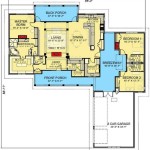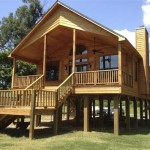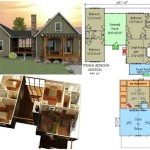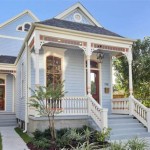Luxury house plan design is the process of creating a blueprint for a high-end residential property. It involves combining architectural expertise, design flair, and a deep understanding of luxury living to create a home that meets the unique needs and desires of discerning clients. From sprawling mansions to cozy retreats, luxury house plans are tailored to provide an unparalleled living experience, embodying opulence, functionality, and timeless elegance.
When embarking on a luxury house plan design project, it’s essential to engage the services of an experienced architect or design-build firm specializing in this niche market. These professionals possess the knowledge and experience necessary to translate your vision into a cohesive and executable plan, ensuring that each detail aligns with your aspirations and lifestyle.
In the following sections, we’ll delve deeper into the key elements of luxury house plan design, exploring the factors that contribute to creating a truly exceptional living space. We’ll discuss the importance of architectural style, space planning, material selection, and the seamless integration of indoor and outdoor living areas. By understanding these intricacies, homeowners can embark on the exciting journey of crafting a luxury home that truly embodies their dreams.
10 Key Points in Luxury House Plan Design:
- Architectural Style
- Space Planning
- Material Selection
- Indoor-Outdoor Integration
- Energy Efficiency
- Smart Home Technology
- Custom Detailing
- Outdoor Living Spaces
- Natural Lighting
- Sustainable Design
These elements come together to create a home that is both luxurious and livable, a reflection of the homeowner’s unique style and aspirations.
Architectural Style
The architectural style of a luxury home is a fundamental element that sets the tone for the entire design. It encompasses the overall form, exterior details, and interior layout of the house, creating a cohesive and visually appealing aesthetic. When selecting an architectural style, it’s important to consider the homeowner’s personal preferences, the surrounding environment, and the desired ambiance of the home.
- Traditional Style: Traditional architectural styles, such as Georgian, Victorian, and Colonial, are characterized by their symmetrical facades, elaborate detailing, and timeless elegance. These styles evoke a sense of history and grandeur, making them popular choices for luxury homes in established neighborhoods.
- Modern Style: Modern architectural styles, such as Bauhaus, Mid-Century Modern, and Contemporary, emphasize clean lines, geometric forms, and an open floor plan. These styles prioritize functionality and simplicity, creating a sleek and sophisticated living environment. Modern homes often feature large windows that flood the interior with natural light and provide seamless transitions between indoor and outdoor spaces.
- Transitional Style: Transitional architectural style blends elements of both traditional and modern styles, creating a harmonious and inviting space. Transitional homes typically feature a symmetrical facade with clean lines, combined with traditional details such as columns or moldings. This style offers a balance between classic elegance and contemporary comfort.
- Mediterranean Style: Mediterranean architectural style is inspired by the homes found in countries bordering the Mediterranean Sea. These homes are characterized by their stucco exteriors, red tile roofs, arched doorways, and wrought-iron balconies. Mediterranean-style homes evoke a sense of warmth and relaxation, making them popular choices for luxury homes in coastal areas.
Ultimately, the choice of architectural style should reflect the homeowner’s unique taste and lifestyle. By selecting a style that resonates with their vision, homeowners can create a luxury home that is both aesthetically pleasing and a true reflection of their personality.
Space Planning
Space planning is a crucial aspect of luxury house plan design, as it determines the flow, functionality, and overall livability of the home. It involves carefully considering the size, shape, and arrangement of rooms to create a cohesive and efficient living environment that meets the specific needs and desires of the homeowners.
When planning the layout of a luxury home, architects and designers consider several key factors, including:
- Lifestyle: The homeowners’ lifestyle and daily routines play a significant role in space planning. The design should accommodate their specific needs, whether they require dedicated spaces for entertaining, home offices, fitness, or hobbies.
- Privacy: Luxury homes often prioritize privacy for both the homeowners and their guests. The layout should create a balance between open, communal areas and private retreats, ensuring that each space offers a sense of intimacy and seclusion.
- Flow: The flow of a home refers to the seamless transition between different spaces. A well-planned layout allows for easy and intuitive movement throughout the house, minimizing disruptions and maximizing convenience.
- Natural Light: Natural light is a highly sought-after element in luxury homes. The layout should take advantage of natural light sources, positioning rooms and windows to maximize daylighting and create a bright and airy atmosphere.
Effective space planning also involves considering the adjacencies of different rooms and functions. For example, placing the kitchen near the dining room and outdoor entertaining areas enhances convenience and flow. Similarly, situating bedrooms away from high-traffic areas ensures privacy and tranquility.
Furthermore, luxury home designs often incorporate flexible spaces that can adapt to changing needs and occasions. Multi-purpose rooms, such as great rooms or media rooms, can accommodate various activities and gatherings. Outdoor living spaces, such as patios, decks, and balconies, extend the living area and provide seamless transitions between indoor and outdoor environments.
Material Selection
The selection of materials plays a pivotal role in defining the aesthetic appeal, durability, and overall value of a luxury home. From the exterior facade to the interior finishes, each material choice should be carefully considered to create a cohesive and visually stunning living environment.
- Exterior Materials:
The exterior materials of a luxury home set the tone for the entire property. They should be both aesthetically pleasing and durable to withstand the elements. Common choices include natural stone, brick, stucco, and high-quality siding. These materials offer a range of textures, colors, and patterns, allowing homeowners to create a unique and personalized facade. - Roofing Materials:
The roofing material is another important consideration in luxury house plan design. It should complement the architectural style of the home and provide excellent protection from the elements. Popular roofing materials for luxury homes include slate, tile, metal, and high-performance shingles. These materials offer a range of durability, longevity, and aesthetic options. - Interior Finishes:
The interior finishes of a luxury home should exude elegance and sophistication. They include flooring, wall coverings, moldings, and millwork. High-quality materials, such as hardwood flooring, natural stone tiles, custom cabinetry, and intricate moldings, add a touch of luxury and refinement to the living spaces. - Hardware and Fixtures:
The hardware and fixtures in a luxury home are not merely functional elements; they are also design statements. From door handles and faucets to lighting fixtures and appliances, every detail should be carefully selected to complement the overall aesthetic of the home. High-quality materials, such as polished brass, brushed nickel, and crystal, add a touch of opulence and sophistication to the living spaces.
By carefully considering the material selection for both the exterior and interior of the home, homeowners can create a luxury living environment that is both visually stunning and highly functional.
Indoor-Outdoor Integration
Indoor-outdoor integration is a defining characteristic of luxury house plan design, blurring the boundaries between interior and exterior living spaces. This seamless connection creates a sense of spaciousness, enhances natural light, and provides homeowners with the opportunity to enjoy the beauty of their surroundings from the comfort of their home.
- Expansive Windows and Doors:
Large windows and doors are essential for creating a strong indoor-outdoor connection. They allow natural light to flood the interior spaces, reducing the need for artificial lighting and creating a bright and airy atmosphere. Floor-to-ceiling windows and sliding glass doors provide unobstructed views of the outdoors, bringing the beauty of nature into the home.
- Outdoor Living Spaces:
Luxury house plans often incorporate generous outdoor living spaces, such as patios, decks, and balconies. These spaces extend the living area beyond the interior walls, providing homeowners with additional space to relax, entertain, and enjoy the outdoors. Outdoor kitchens, fire pits, and pergolas enhance the functionality and comfort of these spaces, creating a seamless transition between indoor and outdoor living.
- Courtyards and Atriums:
Courtyards and atriums are internal open spaces that bring natural light and ventilation into the heart of the home. They create a private oasis within the house, providing a tranquil setting for relaxation and contemplation. Courtyards can be landscaped with lush greenery, water features, or sculptures, while atriums often feature skylights or glass roofs to maximize natural light.
- Biophilic Design:
Biophilic design incorporates elements of nature into the built environment to enhance well-being and create a connection to the outdoors. In luxury house plans, this can be achieved through the use of natural materials, such as wood, stone, and water features. Large windows and indoor plants also contribute to a biophilic design, bringing the beauty and tranquility of nature into the home.
By seamlessly integrating indoor and outdoor spaces, luxury house plans create a harmonious living environment that enhances the homeowners’ quality of life and well-being.
Energy Efficiency
Energy efficiency is a crucial aspect of modern luxury house plan design. Homeowners are increasingly seeking sustainable and environmentally conscious living spaces that minimize their impact on the environment while maximizing comfort and convenience.
- Insulation and Air Sealing:
Proper insulation and air sealing are essential for maintaining a comfortable indoor temperature and reducing energy consumption. Luxury house plans incorporate high-performance insulation materials in walls, ceilings, and floors to minimize heat loss and gain. Air sealing techniques, such as weatherstripping and caulking, prevent air leakage, further enhancing energy efficiency.
- High-Efficiency Windows and Doors:
Windows and doors are potential sources of energy loss. Luxury house plans specify high-efficiency windows and doors with insulated frames and multiple panes of glass to minimize heat transfer. These windows and doors also feature low-emissivity coatings that reflect heat back into the home, reducing the need for heating and cooling.
- Energy-Efficient Appliances and Lighting:
Luxury house plans incorporate energy-efficient appliances and lighting fixtures to reduce energy consumption without compromising on comfort and style. Energy Star-rated appliances meet strict energy efficiency standards, while LED lighting provides bright illumination while using significantly less energy compared to traditional lighting.
- Renewable Energy Sources:
Some luxury house plans integrate renewable energy sources, such as solar panels or geothermal systems, to reduce reliance on traditional energy sources. Solar panels harness the sun’s energy to generate electricity, while geothermal systems use the earth’s natural heat to provide heating and cooling. These renewable energy sources not only reduce energy costs but also contribute to environmental sustainability.
By incorporating these energy-efficient measures, luxury house plans create homes that are not only luxurious but also environmentally responsible, providing homeowners with a comfortable and sustainable living environment.
Smart Home Technology
Smart home technology is revolutionizing luxury house plan design, offering homeowners unprecedented levels of convenience, security, and energy efficiency. By integrating cutting-edge technology into the home’s infrastructure, homeowners can create a living space that is both luxurious and intelligent.
- Control and Automation:
Smart home systems allow homeowners to control and automate various aspects of their home from anywhere using a smartphone, tablet, or voice assistant. This includes controlling lighting, temperature, security systems, and even appliances. Homeowners can create customized scenes and schedules to suit their lifestyle, enhancing convenience and comfort.
- Enhanced Security:
Smart home technology provides enhanced security measures to protect the home and its occupants. Smart locks, security cameras, and motion sensors can be integrated into the system, allowing homeowners to monitor their property remotely and receive alerts in case of any suspicious activity. Smart home systems can also be programmed to simulate occupancy when the homeowners are away, deterring potential burglars.
- Energy Management:
Smart home technology can help homeowners manage their energy consumption more efficiently. Smart thermostats learn the occupants’ temperature preferences and adjust the heating and cooling systems accordingly, reducing energy waste. Smart lighting systems can automatically turn off lights when rooms are unoccupied, further conserving energy.
- Personalized Experience:
Smart home technology can be personalized to suit the unique needs and preferences of the homeowners. Voice assistants can provide customized information, such as weather updates, news, and traffic conditions. Smart home systems can also be integrated with entertainment systems, allowing homeowners to control music, movies, and TV shows using voice commands or mobile devices.
By incorporating smart home technology into their luxury house plans, homeowners can create a living environment that is not only luxurious but also intelligent, convenient, and secure.
Custom Detailing
Custom detailing is a hallmark of luxury house plan design, adding a touch of exclusivity and sophistication to the home. It involves incorporating intricate design elements and high-quality craftsmanship to create a truly unique and personalized living space.
- Architectural Details:
Custom detailing in architectural features can range from grand entryways with soaring ceilings and elaborate moldings to intricate window surrounds and decorative cornices. These details add visual interest and character to the home’s exterior and interior, creating a sense of timeless elegance.
- Interior Finishes:
Luxury house plans often incorporate custom interior finishes, such as coffered ceilings, custom millwork, and artisanal tilework. These details add a layer of sophistication and refinement to the living spaces, creating a truly unique and inviting atmosphere.
- Hardware and Fixtures:
Custom hardware and fixtures, such as door handles, faucets, and lighting fixtures, can elevate the design of a luxury home. These elements are carefully selected to complement the overall aesthetic of the home and add a touch of exclusivity. Bespoke hardware and fixtures can be crafted from high-quality materials, such as bronze, crystal, or hand-blown glass, adding a level of craftsmanship and attention to detail that sets the home apart.
- Outdoor Spaces:
Custom detailing extends to the outdoor spaces of luxury homes as well. Intricate landscaping, water features, and outdoor structures, such as pergolas and gazebos, are designed to create a seamless transition between the interior and exterior living areas. These details enhance the functionality and aesthetic appeal of the outdoor spaces, providing homeowners with a luxurious and private sanctuary.
Custom detailing is not merely about adding ornamentation; it is about creating a home that is both visually stunning and highly functional. By incorporating these intricate details into their luxury house plans, homeowners can create a truly unique and personalized living environment that reflects their taste and aspirations.
Outdoor Living Spaces
Outdoor living spaces are an integral part of luxury house plan design, extending the living area beyond the interior walls and creating a seamless connection to the surrounding environment. These spaces are designed to provide homeowners with a private oasis where they can relax, entertain, and enjoy the beauty of nature.
Patios and Decks
Patios and decks are popular outdoor living spaces that offer a solid and level surface for various activities. Patios are typically constructed of concrete, stone, or pavers, while decks are made of wood or composite materials. They can be designed in various shapes and sizes to accommodate different needs and preferences. Patios and decks often feature comfortable seating areas, outdoor kitchens, fire pits, and pergolas to enhance functionality and ambiance.
Balconies and Rooftops
Balconies and rooftops provide elevated outdoor living spaces with panoramic views. Balconies are typically attached to the upper floors of a house and offer a private retreat for relaxation or entertaining. Rooftops can be transformed into rooftop terraces or gardens, creating an exclusive sanctuary with stunning views of the surroundings. These spaces can be equipped with lounge chairs, seating areas, and planters to create a comfortable and inviting atmosphere.
Courtyards and Atriums
Courtyards and atriums are internal open spaces that bring natural light and ventilation into the heart of the home. Courtyards are often surrounded by walls or buildings, creating a private and secluded outdoor oasis. Atriums, on the other hand, are typically covered by a skylight or glass roof, allowing natural light to flood the interior spaces. These areas can be landscaped with lush greenery, water features, or sculptures to create a tranquil and inviting ambiance.
Outdoor Kitchens and Dining Areas
Outdoor kitchens and dining areas are becoming increasingly popular in luxury house plan design. They allow homeowners to enjoy the pleasures of cooking and dining al fresco. Outdoor kitchens are typically equipped with grills, refrigerators, sinks, and countertops, providing all the necessary amenities for preparing and serving meals. Dining areas can be furnished with comfortable seating and tables, creating a perfect setting for outdoor gatherings and entertaining.
Natural Lighting
Natural lighting plays a crucial role in luxury house plan design, as it not only illuminates the interior spaces but also enhances the overall ambiance and well-being of the occupants. By incorporating large windows, skylights, and other architectural features that maximize natural light, homeowners can create bright and airy living environments that are both visually appealing and energy-efficient.
- Increased Energy Efficiency:
Natural lighting reduces the need for artificial lighting, leading to significant energy savings. By strategically placing windows and skylights to harness natural light throughout the day, homeowners can minimize their reliance on electricity, contributing to a more sustainable and eco-friendly home.
- Improved Health and Well-being:
Exposure to natural light has been linked to numerous health benefits, including improved mood, increased productivity, and better sleep patterns. By incorporating ample natural lighting into their luxury house plans, homeowners can create spaces that promote physical and mental well-being.
- Enhanced Aesthetics:
Natural light can dramatically enhance the aesthetic appeal of a home. It creates a warm and inviting atmosphere, making spaces feel larger and more inviting. By using natural light to highlight architectural features and interior design elements, homeowners can create visually stunning living environments that showcase their personal style.
- Connection to the Outdoors:
Large windows and doors that allow ample natural light also provide a stronger connection to the outdoors. By blurring the boundaries between indoor and outdoor spaces, homeowners can enjoy the beauty of their surroundings from the comfort of their home, fostering a sense of peace and tranquility.
Incorporating natural lighting into luxury house plan design requires careful consideration of window placement, orientation, and the use of reflective surfaces to maximize light distribution. By working with experienced architects and designers, homeowners can create living spaces that are bathed in natural light, enhancing their quality of life and the overall value of their home.
Sustainable Design
Incorporating sustainable design principles into luxury house plan design is becoming increasingly important as homeowners seek to reduce their environmental footprint while maintaining a high standard of living. Sustainability in luxury home design goes beyond energy efficiency and encompasses a holistic approach to resource conservation, material selection, and construction practices.
Energy Efficiency and Renewable Energy:
Luxury house plans can achieve high levels of energy efficiency through the implementation of advanced insulation techniques, high-performance windows and doors, and energy-efficient appliances. Additionally, incorporating renewable energy sources, such as solar panels or geothermal systems, can significantly reduce reliance on fossil fuels and promote sustainable living.
Water Conservation and Management:
Water conservation is a crucial aspect of sustainable luxury house plan design. Low-flow fixtures, rainwater harvesting systems, and drought-tolerant landscaping can help reduce water consumption and minimize the impact on local water resources. Additionally, incorporating greywater systems for non-potable water use can further enhance water efficiency.
Sustainable Materials and Construction:
The selection of sustainable building materials is essential for eco-friendly luxury home design. Using recycled or renewable materials, such as bamboo, cork, or reclaimed wood, reduces the environmental impact associated with material production. Furthermore, employing sustainable construction practices, such as minimizing waste and using low-VOC (volatile organic compound) materials, promotes indoor air quality and reduces the ecological footprint of the home.
Indoor Environmental Quality:
Sustainable luxury house plans prioritize indoor environmental quality (IEQ) to ensure the health and well-being of occupants. Features such as natural ventilation, air purification systems, and the use of non-toxic materials help create a healthy and comfortable indoor environment. Additionally, incorporating biophilic design elements, such as natural light, indoor plants, and access to outdoor spaces, can enhance occupant well-being and reduce stress.










Related Posts








